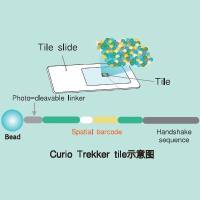Chromatin immunoprecipitation (ChIP) allows enrichment of genomic regions which are associated with specific transcription factors, histone modifications, and indeed any other epitopes which are present on chromatin. The original ChIP methods used site-specific PCR and Southern blotting to confirm which regions of the genome were enriched, on a candidate basis. The combination of ChIP with genomic tiling arrays (ChIP-chip) allowed a more unbiased approach to map ChIP-enriched sites. However, limitations of microarray probe design and probe number have a detrimental impact on the coverage, resolution, sensitivity, and cost of whole-genome tiling microarray sets for higher eukaryotes with large genomes. The combination of ChIP with high-throughput sequencing technology has allowed more comprehensive surveys of genome occupancy, greater resolution, and lower cost for whole genome coverage. Herein, we provide a comparison of high-throughput sequencing platforms and a survey of ChIP-seq analysis tools, discuss experimental design, and describe a detailed ChIP-seq method.
Chromatin immunoprecipitation (ChIP) allows enrichment of genomic regions which are associated with specific transcription factors, histone modifications, and indeed any other epitopes which are present on chromatin. The original ChIP methods used site-specific PCR and Southern blotting to confirm which regions of the genome were enriched, on a candidate basis. The combination of ChIP with genomic tiling arrays (ChIP-chip) allowed a more unbiased approach to map ChIP-enriched sites. However, limitations of microarray probe design and probe number have a detrimental impact on the coverage, resolution, sensitivity, and cost of whole-genome tiling microarray sets for higher eukaryotes with large genomes. The combination of ChIP with high-throughput sequencing technology has allowed more comprehensive surveys of genome occupancy, greater resolution, and lower cost for whole genome coverage. Herein, we provide a comparison of high-throughput sequencing platforms and a survey of ChIP-seq analysis tools, discuss experimental design, and describe a detailed ChIP-seq method.






